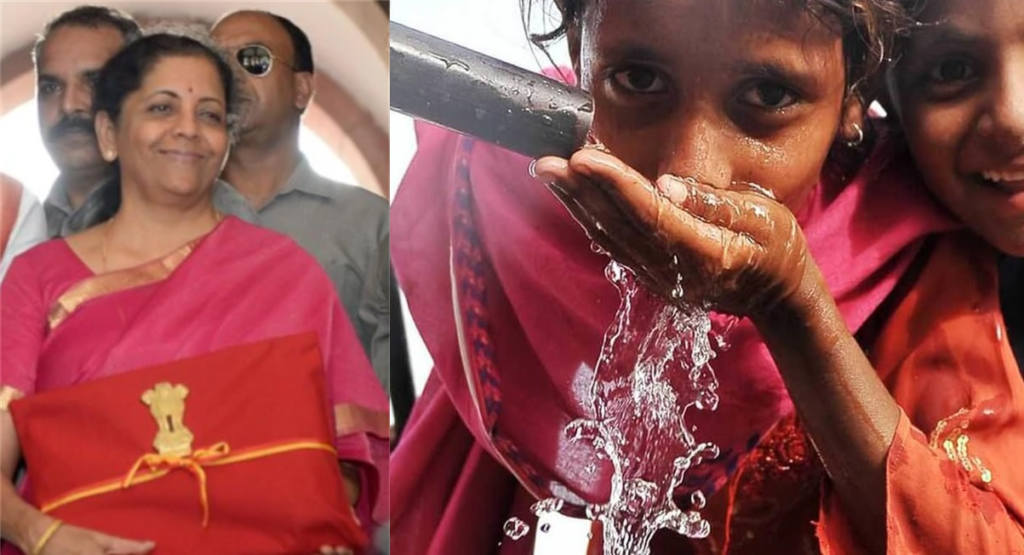Almost a month ago, the Modi government had constituted a new ministry named Ministry of Jal Shakti to look after water-related issues. The newly created ministry would look after the work of Ministry of Water Resources, River Development and Ganga Rejuvenation and Ministry of Drinking Water and Sanitation. This was the highlight of the ministry constitution in the second term of the Modi government.
Water conservation and ‘Har Ghar Jal’ was the highlight of the Budget speech by newly appointed finance minister Nirmala Sitharaman. In her Budget speech, she said, “Ensuring India’s water security and providing access to safe drinking water to all Indians is a priority. A major step in this direction has been the constitution of Jal Shakti Ministry.”
“This new Ministry will look at the management of our water resources and water supply in an integrated and holistic manner and will work with states to ensure ”Har Ghar Jal”, to all rural households by 2024 under ”Jal Jeevan Mission’,” she added in her Budget speech.
The Jal Shakti ministry also aims to make rainwater harvesting more efficient. “A total of 1,592 blocks have been identified which are over-exploited in terms of ground water, and government will focus on these blocks,” said the minister.
Only 4 percent of water is used for drinking purpose while 80 percent of the water is used in agriculture. The water consumption in the country is largely unregulated and therefore very inefficient. “The setting up of a separate ministry will give water conservation measures the much-needed impetus it deserves,” said an official.
The country is facing a very serious water crisis and the problem is that concern around the matter seems very limited. According to the NITI Aayog, India is suffering from the worst water crisis in its history and millions of lives and livelihoods are under threat. “Currently, 600 million Indians face high to extreme water stress and about two lakh people die every year due to inadequate access to safe water.” It is estimated the crisis is going to get worse by 2030 when India’s water demand is projected to be twice the available supply.
‘Har Ghar Jal’ is a great initiative because as of today, only 18.24 percent (32.57 million out of 178.54 million) households have access to piped water. As per estimation by NITI Aayog, the country would bear a 6 percent loss in GDP by 2020 due to water-related issues, if the crisis is not dealt with on a priority basis. As per the report, 21 Indian cities including Delhi, Bengaluru, Chennai and Hyderabad will face a shortage of groundwater by 2020 and it will impact living of around 10 crore people.
